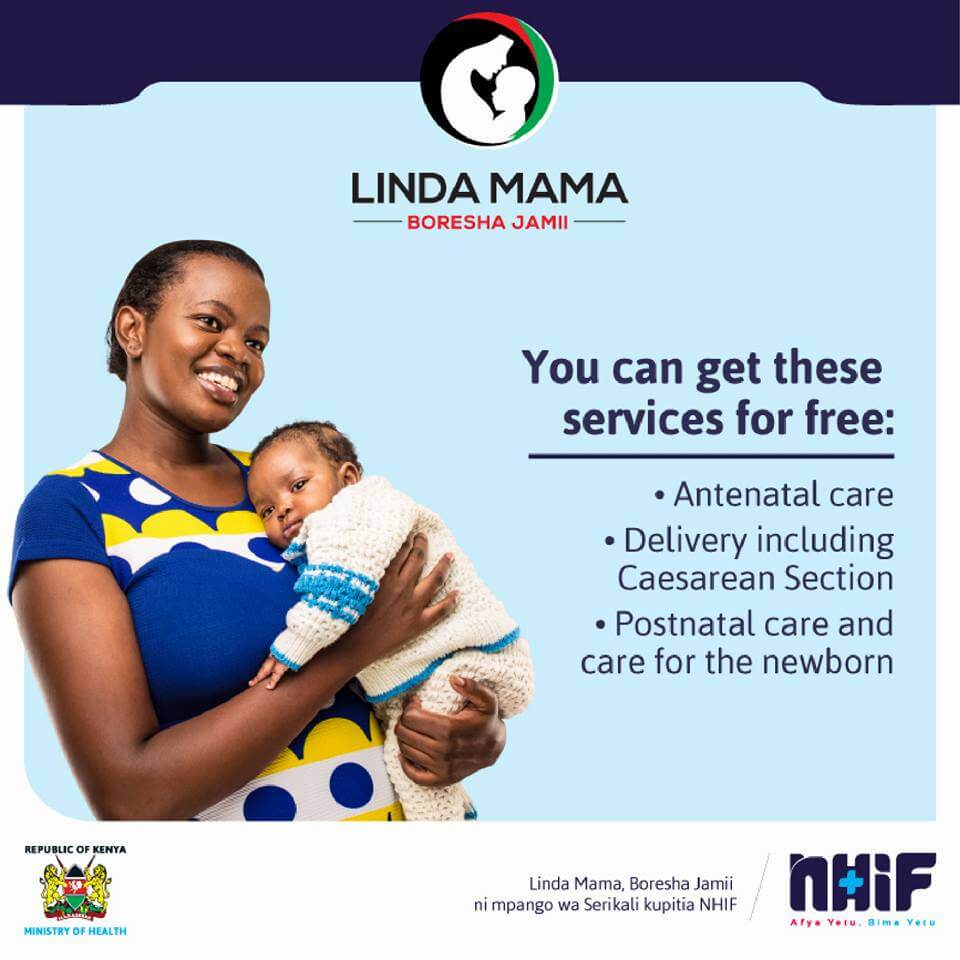Nirmala Ravishankar (ThinkWell), Boniface Mbuthia (ThinkWell Kenya), Stacey Orangi (KEMRI Wellcome Trust), and Edwine Barasa (KEMRI Wellcome Trust)
Covid-19 threatens to reverse the progress countries have achieved in improving maternal and child survival, even as it strains government budgets as they take on unprecedented levels of debt to respond to the health and economic crises that the pandemic has wrought. In such an environment, ensuring that countries like Kenya are getting maximum value out of existing health care financing programs for high priority maternal and child health services takes on additional significance.
In 2019, KEMRI Wellcome Trust and ThinkWell conducted an evaluation of Kenya’s Linda Mama program to ascertain the effectiveness of the Kenyan government’s policy to provide free maternal health care. With the onset of the Covid-19 global pandemic, the evaluation’s findings are even more relevant for the country as it seeks to ensure that health care funding is optimally deployed within an increasingly precarious health and economic context.
Linda Mama
In 2013 – after analysis revealed that 6,000 women were dying annually from preventable causes during pregnancy and childbirth – Kenya first introduced a free maternal care program abolishing all user charges for deliveries at public healthcare facilities. Instead, the Ministry of Health (MOH) started reimbursing health facilities for the lost revenue.
The limitations of this arrangement – MOH was not set up to register beneficiaries, verify provider claims, or extend the program to private facilities for example –led to the program being transferred to the National Hospital Insurance Fund (NHIF) in 2016. Under the renamed Linda Mama program, any pregnant woman in Kenya should be able to register with NHIF to access a defined set of maternal and newborn health services free of charge from a public or private provider contracted by NHIF. MOH is meant to provide funding to NHIF to reimburse providers for the services provided.
That is the policy on paper. But what are the ground realities in health facilities for mothers and children that the program is intended to help?
To answer this question, KEMRI Wellcome Trust and ThinkWell surveyed staff from a sample of public and faith-based health facilities as well as program beneficiaries across 5 counties. The results of the study, which was published in a peer-reviewed journal last month, shows that the transfer of the program to NHIF has addressed some of the early limitations of the program but also given rise to significant new operational challenges.
Key Findings
First and foremost, program beneficiaries are still incurring out-of-pocket payments despite the promise of free care. Indeed, between 9% to 52% of beneficiaries interviewed in the five counties reported paying for services covered by the program. This was in part due to the unavailability of essential commodities and supplies in public facilities, which then forced mothers to buy supplies and drugs elsewhere. It is also because NHIF is not reimbursing facilities for all the services included in the expanded benefit package. On paper, the package includes antenatal care, delivery, postnatal care, emergency referrals, treatment for pregnancy complications, and newborn health services. Facility managers reported that in practice NHIF excludes ultrasounds, treatment for complications, family planning as part of postnatal care, transport for emergency referrals, or newborn care. Hence, facilities continue to charge beneficiaries for these services.
Second, many facilities reported challenges with accessing Linda Mama reimbursements. Lower-level public facilities lacked the staff and computer systems to lodge claims. Other facilities struggle with NHIF reimbursements being delayed and unpredictable. This is not entirely NHIF’s fault; according to managers there, MOH does not release funds to NHIF in a timely manner, which in turn forces the agency to delay reimbursements to providers. In four of the five counties, public hospitals could not use the funds they received from NHIF because county governments insist that these funds be remitted to the county’s central account and do not send any of it back to the facility.
Third, facilities expressed frustration with the Linda Mama tariffs set by MOH being too low to cover their costs. Indeed, Linda Mama reimbursements rates are lower than what a facility receives from NHIF for the same service under its general scheme. Many private facilities have pulled out of the program, which is troubling given that inclusion of private providers was one of the main reasons MOH shifted it to NHIF.
Strengthening Maternal Health Finance in Kenya
Addressing these basic operational challenges is important for ensuring the success of Linda Mama, which is critical for improving maternal health outcomes in Kenya, particularly in the face of Covid-19 and its negative impact on utilization of maternal health services. The implementation experience of Linda Mama also offers important lessons about the types of challenges NHIF will likely face as it attempts to scale up Kenya’s Universal Health Care program, wherein MOH is sponsoring NHIF cover for a million poor households.
While ours is a one-off study, NHIF and MOH ought to be analyzing routine data on Linda Mama claims and payments to identify and address ongoing implementation gaps. We also urge NHIF to release information about how much it is spending annually on Linda Mama, broken down by county, facility type and service. Kenyans deserve to know how the country’s largest tax-funded universal entitlement program for maternal health is supporting women during an era of escalated health risks for mothers and children alike.
Disclaimer: The author’s views expressed in this blog do not necessarily reflect the views of P4H members or the Coordination Desk.


